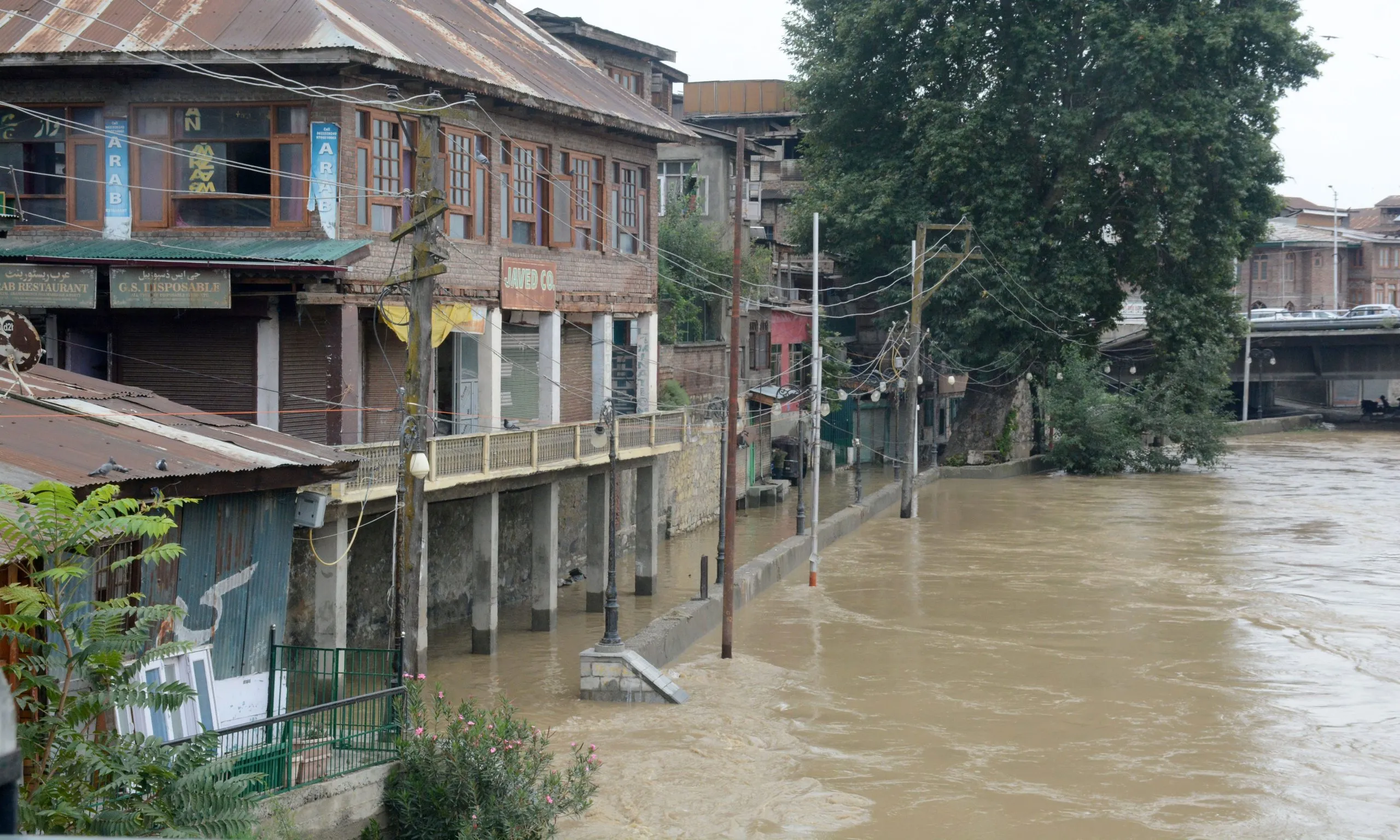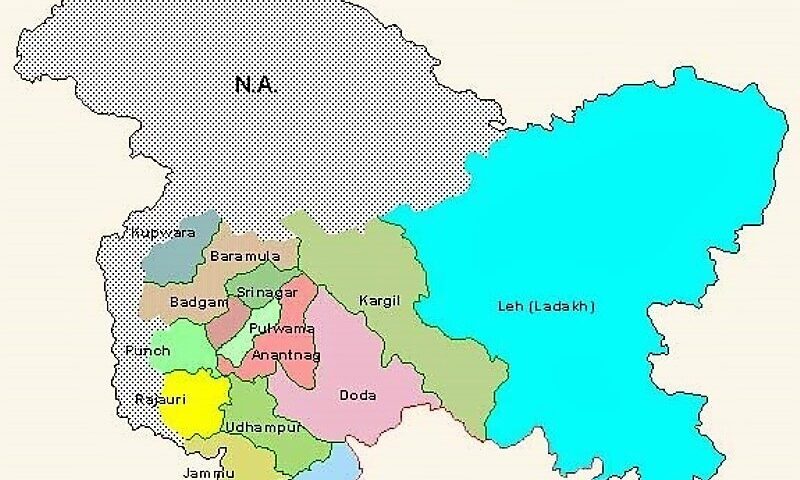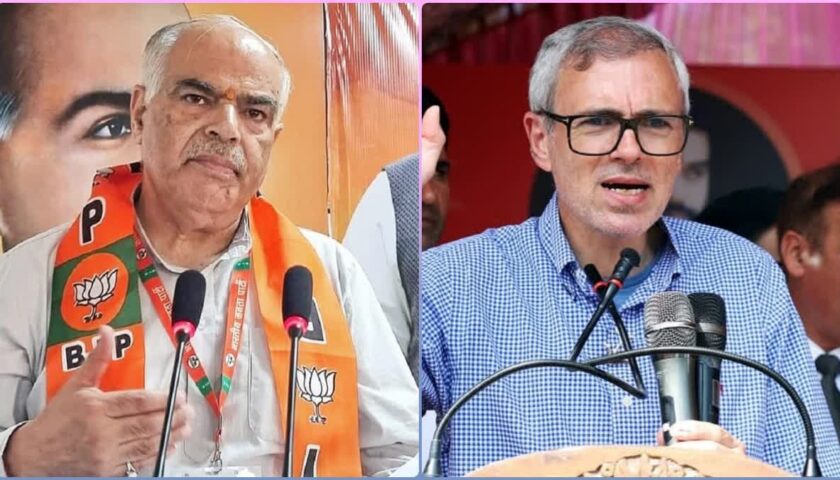A Decade After 2014, Lessons Still Unlearned
By: Javid Amin | 30 Aug 2025
The Return of a Nightmare
In September 2014, the people of Srinagar woke to a nightmare they will never forget. The Jhelum River breached its embankments, spilling over into neighborhoods that had stood for generations. Entire colonies like Rajbagh, Jawahar Nagar, Bemina, and Gogji Bagh went underwater. Lal Chowk, the city’s commercial heart, resembled a drowned marketplace.
The toll was staggering:
-
Over 300 lives lost
-
More than 2.5 lakh houses damaged
-
Billions in property, business, and infrastructure wiped away
The 2014 floods were described by hydrologists as a “once-in-a-century” event. But a decade later, the question haunting Kashmir is: Have we done enough to ensure it never happens again?
The grim answer, revealed by data and on-ground reality, is no.
The Comprehensive Flood Management Plan – Big Funds, Bigger Failures
In 2015, the government launched the Comprehensive Flood Management Plan (CFMP) as a direct response to the 2014 floods. Its goal: to make Srinagar resilient to high discharge events by strengthening embankments, dredging rivers, reviving spill channels, and modernizing drainage.
Phase I (2015–2020) at a glance:
-
₹399 crore sanctioned
-
₹114.29 crore central assistance released and fully utilized
-
31 projects sanctioned → only 16 completed
What was delivered?
-
Temporary embankment strengthening
-
Patchwork flood protection in a few stretches
-
Desilting of irrigation canals (670 km in 2023–24)
What was not delivered?
-
No dredging of the Jhelum since March 2020
-
No revival of the Flood Spill Channel (FSC)
-
No full upgrade of Srinagar’s outdated drainage system
A senior official from the Irrigation & Flood Control (IFC) department admitted under anonymity:
“We submit DPRs (Detailed Project Reports), funds come, some contracts get executed, but the main tasks like Jhelum dredging face delays. Technical excuses are offered, but the real reasons are bureaucratic bottlenecks and political interference.”
Jhelum – A River That Can No Longer Breathe
Historically, the Jhelum’s carrying capacity in Srinagar was estimated at 55,000–60,000 cusecs. But decades of siltation and unchecked urban dumping have reduced it drastically.
-
2014 flood discharge: ~120,000 cusecs
-
Current Jhelum capacity in Srinagar: ~32,000 cusecs
-
Gap: Nearly 88,000 cusecs – a recipe for disaster
From 2015–2020, limited dredging was carried out, mostly around Baramulla and Sopore. But after March 2020, not a single kilometre has been dredged.
Hydrologist Prof. Nazir Ahmad explains:
“Without dredging, the Jhelum is like a clogged artery. You can build embankments and install pumps, but unless the riverbed is deepened and widened, water has nowhere to go. Every storm risks a cardiac arrest for Srinagar.”
Encroachments – The Silent Killers of Flood Safety
If silt reduces Jhelum’s depth, encroachments steal its width.
Official surveys identified 1,884 illegal structures along the Jhelum and its flood spill channels:
-
283 permanent/semi-permanent buildings
-
1,233 boundary walls
-
215 trees planted on embankments
Action taken so far? Minimal.
-
Only 2 walls demolished
-
200 trees axed
Most encroachments remain, including shops, houses, and godowns owned by influential businessmen.
Urban planner Dr. Mehmood Shah points out:
“You cannot expect the river to carry floodwaters if you have squeezed its arteries with concrete walls and shopping complexes. Every encroachment is a nail in Srinagar’s coffin.”
Floods Fueled by Neglect – The Urban Dimension
Beyond the Jhelum, Srinagar suffers from a triple urban crisis:
-
Choked Drainage Systems
-
Most of Srinagar’s drains date back to the Dogra era, designed for a population one-fifth of today’s.
-
Pumping stations often fail during power cuts, flooding low-lying colonies.
-
-
Vanishing Wetlands
-
Wetlands like Narkara, Hokersar, Khushalsar, and Bemina wetlands once absorbed excess water.
-
Over 50% lost in the last 50 years due to housing colonies, malls, and road expansion.
-
-
Unregulated Expansion
-
High-risk colonies mushroomed on floodplains (Jawahar Nagar, Rajbagh, Bemina).
-
Builders prioritized short-term profit over long-term safety.
-
Thus, today even two hours of heavy rain floods Lal Chowk—not because of extreme weather, but because Srinagar has lost its natural defense.
The 2024–25 Government Action Plan – Promise or Patchwork?
The Srinagar District Flood Mitigation Roadmap for 2024–25 highlights:
-
Drainage upgrades in 18 wards (priority: Lal Chowk, Bemina)
-
Smart sensors for real-time flood alerts
-
Partial dredging of tributaries (not the Jhelum itself)
-
Wetland restoration at Narkara & Khushalsar
-
Pilot revival of Flood Spill Channel (FSC)
While welcome, experts call it “patchwork.”
-
No hard deadlines mentioned.
-
Tributary dredging seen as symbolic when Jhelum remains choked.
-
Wetland restoration undermined by simultaneous construction approvals nearby.
Activist Bilal Dar summed it up:
“We don’t need another glossy plan. We need bulldozers clearing drains and engineers dredging rivers before the next storm, not after.”
Lessons from Elsewhere – Why Srinagar Lags
Other Himalayan states faced similar crises but acted faster:
-
Uttarakhand: After the 2013 Kedarnath floods, strict zoning laws banned construction in river floodplains.
-
Himachal Pradesh: Following the 2023 cloudburst disaster, a state-level task force launched emergency dredging and drainage restoration.
-
Bangladesh: Regular dredging of the Brahmaputra and Ganga tributaries increased resilience against seasonal flooding.
By contrast, Srinagar still waits for pilot studies while the city floods every year.
Voices from the Ground
-
Shabir Ahmad (Shopkeeper, Lal Chowk):
“Every monsoon we pile sandbags outside our shops. The government says plans are underway. But floods don’t wait for files.” -
Arifa (Mother, Jawahar Nagar):
“My children cry when clouds gather. In 2014, we lost our home. Even today, a heavy rain brings water into our courtyard.” -
Engineer, IFC Department (Anonymous):
“We have blueprints, DPRs, maps. But when it comes to removing encroachments, political pressure ties our hands.”
What Must Change – A Roadmap to Resilience
-
Immediate dredging of Jhelum – deepen and widen its channel.
-
Strict anti-encroachment drives – demolish illegal structures, regardless of ownership.
-
Revive Flood Spill Channel – make it functional as a parallel water escape.
-
Drainage overhaul – modern, power-backed pumping stations and wider storm drains.
-
Wetland protection – declare no-construction eco zones with legal enforcement.
-
Independent monitoring – third-party audits to ensure CFMP works are real, not paper-based.
-
Community preparedness – early warning systems, drills, and insurance coverage for at-risk zones.
FAQs
Q1: Why hasn’t dredging been done since 2020?
Tendering delays, lack of machinery, and political-business nexus blocking contracts.
Q2: What makes Srinagar more vulnerable than before?
Encroachments, vanishing wetlands, outdated drains, and no major flood defense works in a decade.
Q3: How many illegal structures choke Jhelum?
1,884 identified, only a handful removed.
Q4: Can wetlands really prevent floods?
Yes, wetlands act as giant sponges. With half of them gone, Srinagar lost its natural buffer.
Conclusion – A City on Borrowed Time
Ten years after the 2014 floods, Srinagar was supposed to be safe. Instead, it remains a city waiting for the next deluge.
The Comprehensive Flood Management Plan has turned into a comprehensive governance failure—money spent, projects delayed, but no real protection.
The choice for policymakers is clear:
-
Continue cosmetic works and hope nature is merciful, or
-
Take bold, unpopular, and urgent measures—dredging, demolitions, drainage modernization, and wetland revival.
Because in Kashmir today, floods are not natural disasters anymore. They are man-made tragedies.




